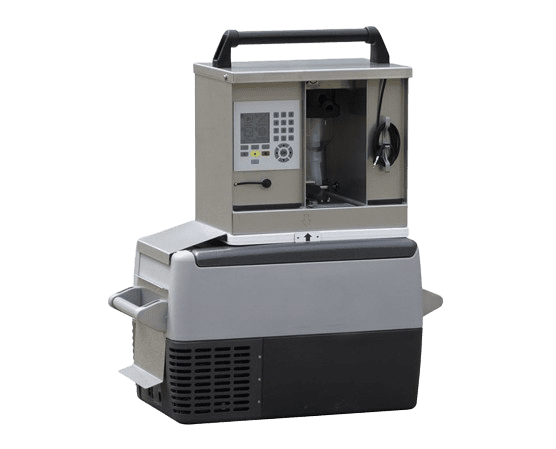
REFRIGERATED PORTABLE SAMPLER AQUIFROID
Description
He AQUIFROID is a self-contained, compact, robust and easily transportable refrigerated sampler. It offers sampling by time, volume or event. Built-in refrigeration ensures sample integrity.
Advantages
- 304 stainless steel sampling head
- Sampling by time, event or flow.
- 2 sampling systems available : vacuum pump or peristaltic pump.
- Sampling head common to AQUIBOX and AQUIFROID samplers. Cooling unit to add for maintain samples at 4°C.
- Autonomy up to 600 samples.
Assets
- Several programs available simultaneously.
- Possibility of connection to various water quality sensors
- Can be linked to a flow meter
Similar products
Why trust AQUALABO?
AQUALABO, a French company, offers a combination of experience, innovation, international presence, adaptability, and ecological commitment, making it a trusted partner for water quality control.
FAQ REFRIGERATED PORTABLE SAMPLER AQUIFROID
To trigger a sampling based on a quality measurement, can I connect an Aqualabo water quality sensor to the AQUIFROID?
It is feasible to link our water quality probes to our samplers to activate sampling based on quality measurements. This integration enables real-time monitoring of water conditions, and when specific quality thresholds or conditions are met, it can automatically initiate the sampling process. This capability facilitates targeted sampling based on specific parameters such as pH, dissolved oxygen, turbidity, or other relevant water quality indicators.
What is the temperature range in which the AQUIFROID can maintain the sample refrigerated?
The AQUIFROID will keep the sample cold in ambient temperatures up to +60°C. However, we recommend that you protect the sampler from direct sunlight or heavy rain with a tarp or similar accessory.
Why sampling refrigeration is critical ?
Refrigerating water samples is paramount for diverse reasons. First of all, it ensures preservation, maintaining the sample's quality and integrity for accurate and reliable analyses. Swift chilling, as done between 1-10°C post-collection, prevents bacterial growth that could alter the sample's composition, preserving the accuracy of subsequent analyses.
